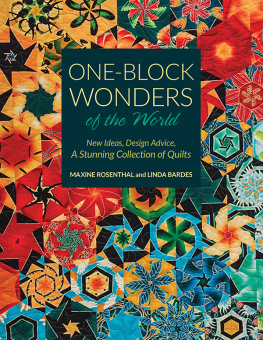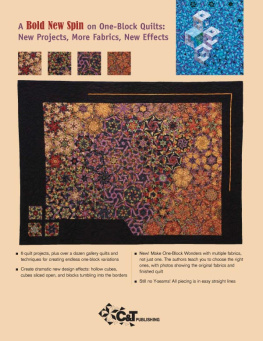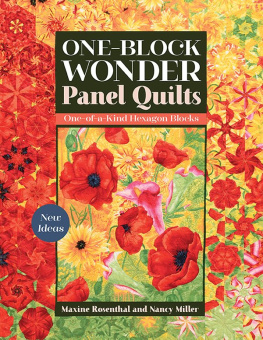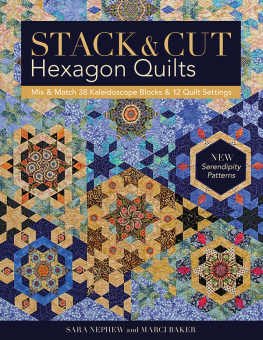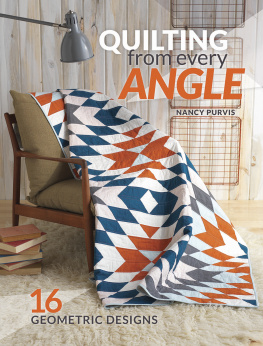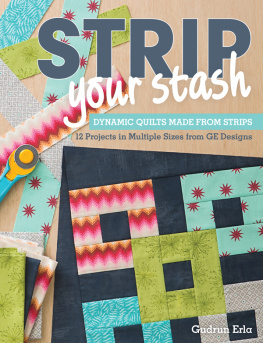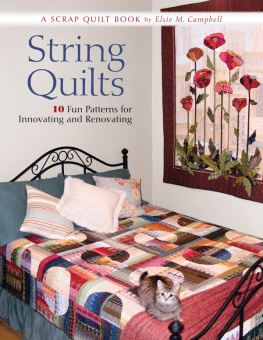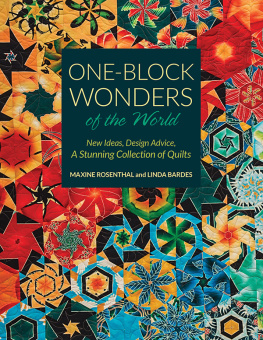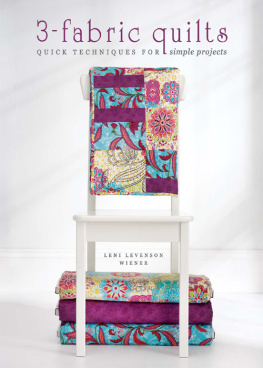Publisher: Amy Marson
Creative Director: Gailen Runge
Editors: Karla Menaugh and Liz Aneloski
Technical Editor: Debbie Rodgers
Cover Designer: April Mostek
Book Designer: Christina Jarumay Fox
Production Coordinator: Tim Manibusan
Production Editors: Alice Mace Nakanishi and Jennifer Warren
Photo Assistant: Mai Yong Vang
Photography by Diane Pedersen of C&T Publishing, Inc., unless otherwise noted
Published by C&T Publishing, Inc., P.O. Box 1456, Lafayette, CA 94549
ACKNOWLEDGMENTS
We want to acknowledge all of the One Block Wonder Quilt Forum members on Facebook. You have inspired us from the beginning with all of the unique quilts you have posted and continue to post on the forum. You took Maxines basic process and innovated in unforeseen yet brilliant ways that stimulated the idea for this book. We are only sorry that we were unable to use many of the quilts from artists who wanted to contribute to this project. We made our choices based on the story we wanted to tell, not because we thought one quilt was better than another. Thank you.
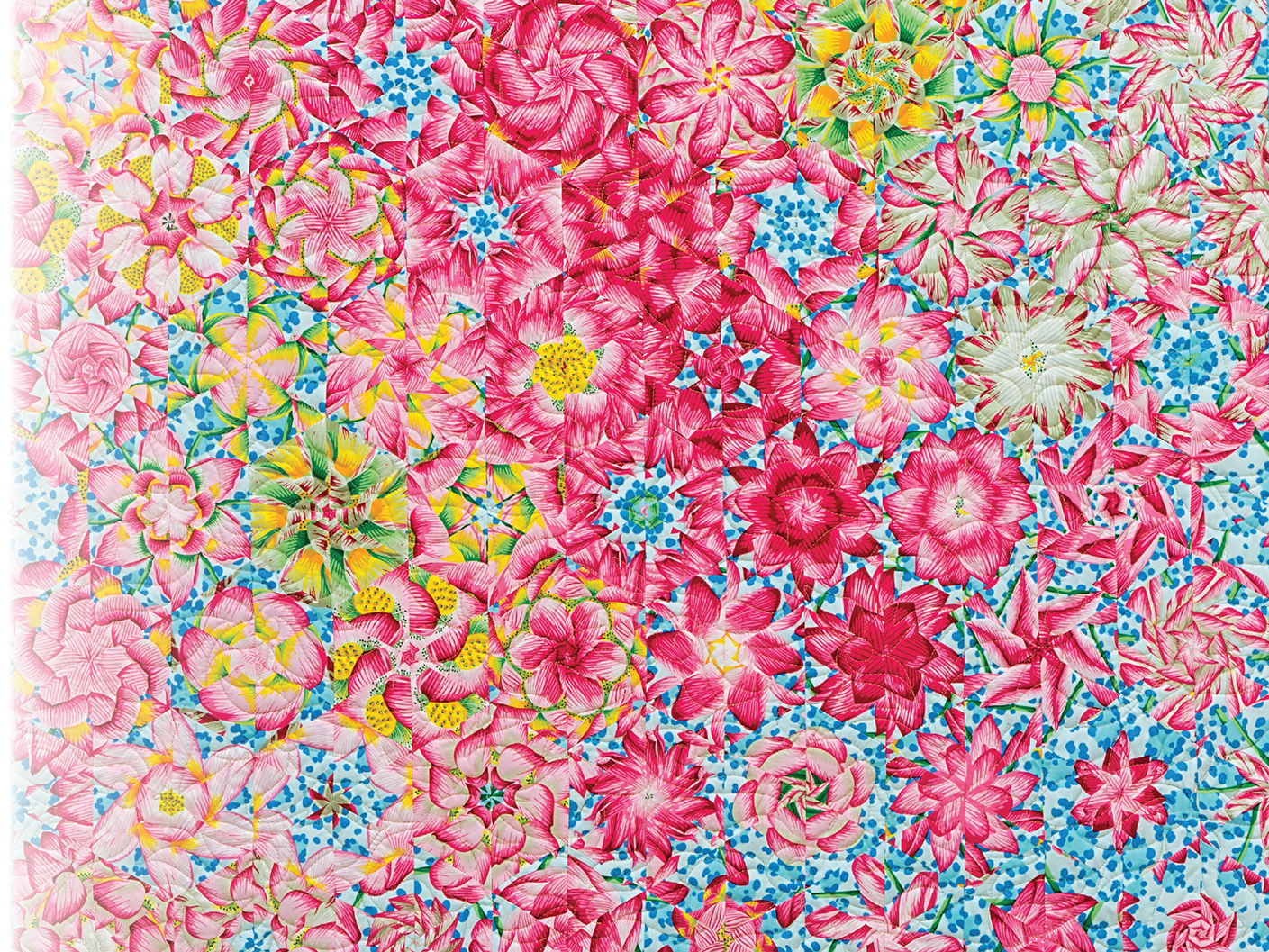
DEDICATION
To One-Block Wonder
artists everywhere,
who have created
so many amazing and
one-of-a-kind quilts.
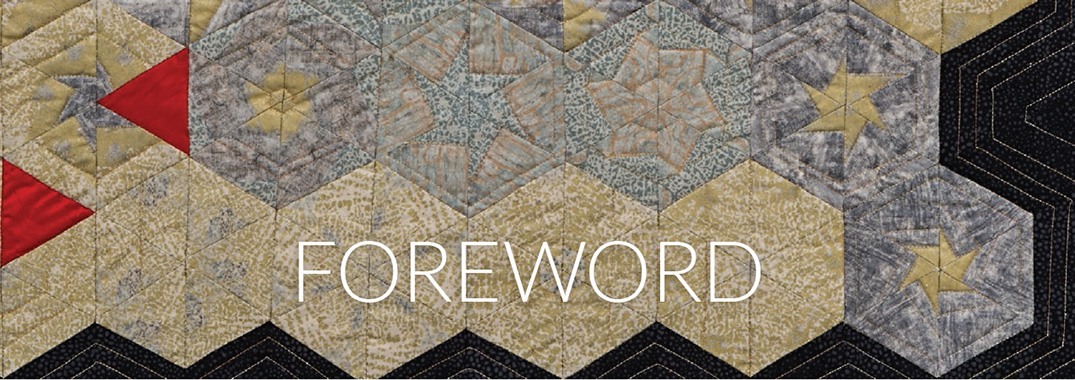
LINDA SAYS:
I came late to quilting, even though I have been sewing since I was 12. I am now 74. My retirement began when I was 60, and I floundered for a while until I started sewing little purses and bags.
After watching Nancy Zieman interview Bruce Seeds about his One-Block Wonder (OBW) quilts, I was smitten. YouTube videos further excited me. I bought two of Maxine Rosenthals One-Block Wonder books and began to sew my own One-Block Wonders (OBWs).
Even though I was not enthusiastic about traditional quilts or even modern quilts, I liked OBWs because I did not need to have a stash of fabric to create them. One fabric, plus any borders I might want, was all that I needed. I also liked that with these quilts, what you see is not what you get. The mystery and the process seduced me.
Shortly after I sewed my first OBW using an upholstery fabric, I looked for an OBW group on Facebook but did not find one. So I created the One Block Wonder Quilt Forum. Within a year there were more than 3,000 members, and after a year and a half, there were almost 5,000 members from all over the world.
Maxine and I have seen some amazingly beautiful and unique quilts. People were using Maxines basic instructions and process to innovate all over the place. Members were creating and sharing how-to files, creating photo albums, and responding intelligently and respectfully to questions. One day I noticed that Maxine Rosenthal had commented on someones question, so I sent her a message suggesting that there was enough material in the group for a fourth book. Why dont you help me do it? she responded. That had not been my intention, but I recognized it as an opportunity. Who would have guessed that we both lived in the same city?
I put together a table of contents and sent it to Maxine. I think about the phrase, Chance favors the prepared mind. It was as though we were waiting for what happened next. Maxine was contacted by C&T Publishing to see if she had any ideas for another book. We sent in the table of contents, our proposal was accepted, and here we arewriting One-Block Wonders of the World.
Magic, pure magic!

Joy/Luck, 42 38, machine pieced and quilted by Linda Bardes, 2013. Pieced using 3 strips.
This is my first One-Block Wonder quilt. Right from the beginning, I called it Joy/Luck. Little did I know that this quilt would create exactly that!

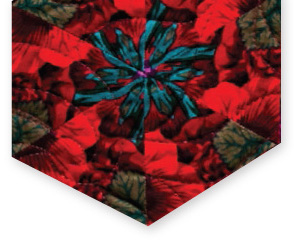
T his book began as a Facebook pagethe One Block Wonder Quilt Forum. Making a One-Block Wonder is a process, a technique that is open to interpretation and application. A One-Block Wonder is not made from a pattern; that is its beauty and its frustration. It is about living in the mystery. That mystery is what keeps quilters coming back again and again.
The focus of this book is to offer design help, to show you what others have done (the beginning fabric and the ending project), and to empower you to cut into that beautiful fabric that has been sitting in the closet.
Well show you many before and after photos, because one of the most asked questions on the online forum is, Will you show the original fabric? (We include the fabric manufacturers information, too, if available.) It is amazing what is produced from each fabric. Often we would never have guessed that a certain fabric would produce such a quilt.
People have taken the basic concepts of a One-Block Wonder, played with them, and invented their own ideas. This book is about sharing those ideas with you. This book, then, is about your creations with the One-Block Wonder technique. You have so many more ideas than we alone could possibly have. This book is a tribute to everyone who has added to the One-Block Wonder experience.
The original book, One-Block Wonders (by C&T Publishing), included hexagons and octagons. This book will focus only on hexagons, since that is what most people are using. We give you as much information about each quilt as the artist could supply, but some completion dates are not known, nor are all the details about the fabrics.
A hexagon is a six-sided object. A One-Block Wonder block is a hexagon composed of six identical equilateral triangles that form a kaleidoscopic image. The hexagons are then put on the design wall with no space between them and moved around and around until a pleasing design is created. With just a few borders, a quilt is complete. One fabric, one quilt. The basic construction is simpleno Y-seamsbut for most people, the challenge is in the design.
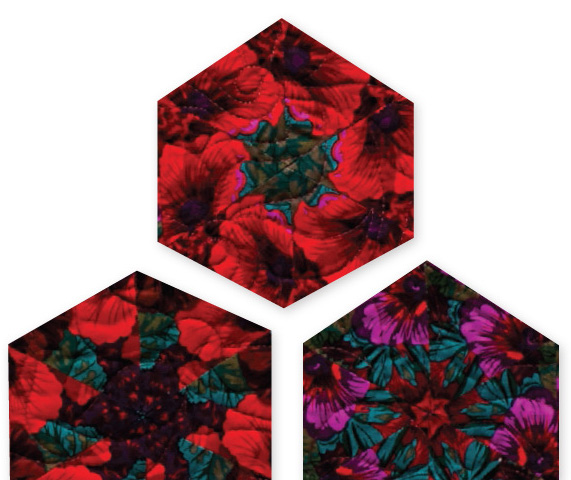
SUPPLIES
You will need just a few basic suppliesa rotary cutter and mat, a ruler, flower-head pins, a sewing machine, and a design wall.
The Differences in 60 Rulers
The 60 line on a rectangular ruler is enough to cut all the triangles, but you might find it easier to use a 60 triangle ruler. There are several 60 rulers available, and there seem to be two stylesone that has a point and one that does not have a point. There is a difference between the two.
MAXINE SAYS:
When I started making One-Block Wonders, there was one 60 triangle ruler style available. The ruler had a point at the end, and measuring down the center of the triangle began right at that tip. Now there is another style of 60 ruler, one without a tip. Measuring down the center begins at that cut-off edge, which is away from what would have been the point. When you lay each ruler with the 3 line along the bottom of a 3 strip of fabric, you have two different triangle sizes. In reality you have a triangle and a trapezoid. That means that a triangle cut with the 3 line on the ruler with the point is not the same as a triangle cut with the 3 line of the ruler without the point. For the triangles to be the same size, you would have to place the ruler without the point on the 3 line, because the missing tip is .
Next page
